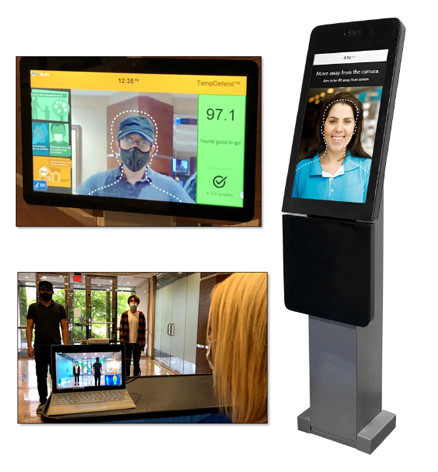Press
Building Reopening Checklist

10 steps to Creating a Hygienic Workplace
1. Water System Safety
Check any water systems that have shutdown for prolonged periods of time. Stagnant or standing water can increase the risk of waterborne illnesses.
2. Limited touch Environments
Reduce contact with frequently-touched surfaces by installing sensor-activated door openers and restroom dispensers. Place paper towels near restroom exits for use on door handles.
3. Training for Cleaning Staff
Ensure proper training of cleaning staff including the differences between cleaning, sanitizing, and disinfecting. Training should also be provided to avoid cross contamination and avoid “hot spots.”
4. Screening Procedures
Establish a protocol for health screenings. Will your conduct a screening for each person entering the building? Will you have stations for temperature checks and virtual sign-ins? Will you install kiosks for touchless/contactless screening at entrances?
5. Social Distancing
Create a workspace area where individuals can work at least six feet apart. Also consider limiting the number of chairs in meeting spaces and conference rooms.
6. Avoiding Shared Spaces & Equipment
Avoid situations where workers would use shared desks, work tools or equipment. Where possible, provide each employee with individual equipment and space.
7. Hygiene Information Signage
Post hand hygiene tips and details, screening details, and cleaning procedures on visible signs throughout the building and office areas. Additionally notes about cleaning schedules will reassure employees about the cleaning and safety measures you are taking to provide a hygienic environment.
8. Hygiene Supplies
Keep critical supplies well-stocked. These include soap, bathroom tissue, hand sanitizer, surface cleaner, and personal disinfectant wipes for personal items like desks, phones, and keyboards.
9. Planning for Illness
Develop a response plan in case someone in your building becomes ill. This should include a space to be safely isolated and a plan to transfer that person to a health facility.
10. Indoor Air Quality
Consider installing a system to improve indoor air quality. According to the EPA, an indoor air quality system can lead to increased productivity, medical savings, and fewer lost work days.